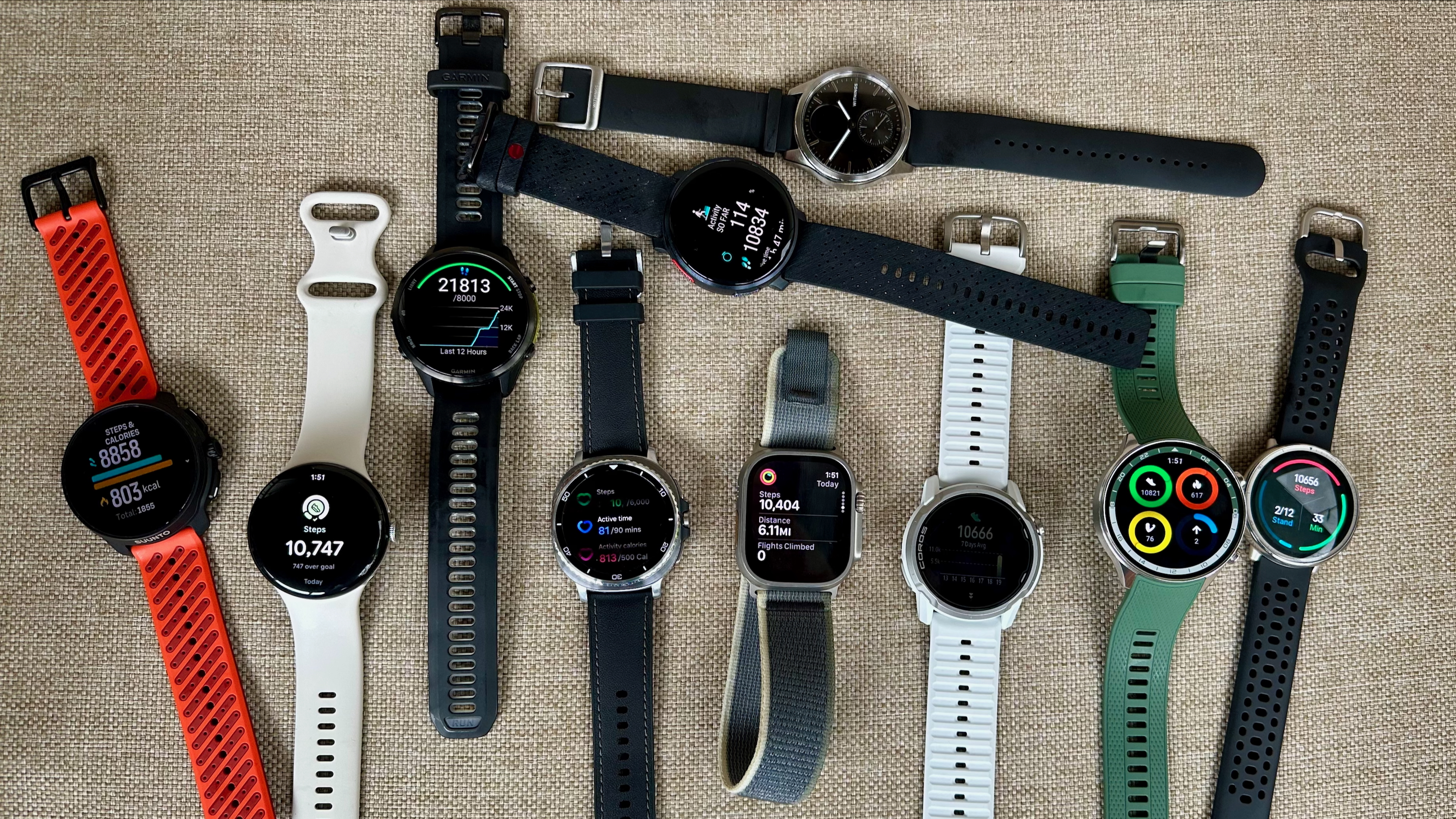Google Pixel 8a vs. Pixel 8: Every key difference
The Pixel 8a vs. Pixel 8 is similar for performance, display, and battery life, but different for cameras, protection, and other areas.
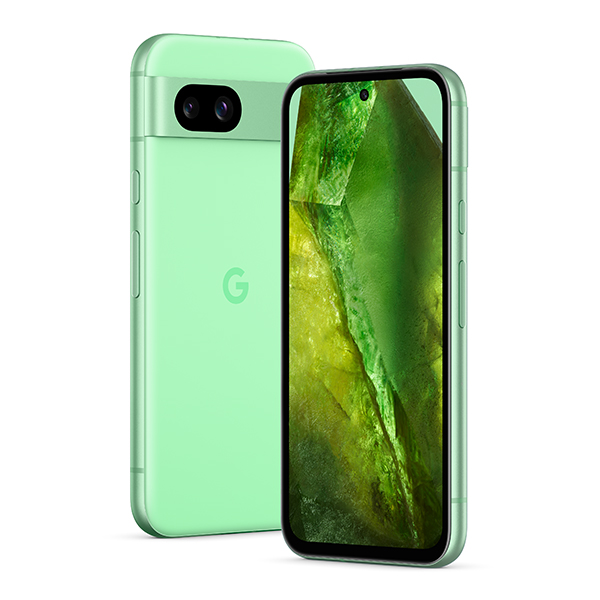
Barely a compromise
The Google Pixel 8a has shed most of the downsides of past Pixel "A" phones like poorer display quality and less RAM, making it a great mid-range option with very few downsides. Google does block a few mainline features from its cheaper model to upsell you, but almost nothing feels like an insurmountable issue.
Pros
- Spend roughly $200 less
- Tensor G3 chip with 8GB RAM
- FHD 120Hz display w/ 2,000 nits
- Comparable battery life
- Seven years of OS updates
- 256GB storage option
Cons
- Display is not great for PWM-sensitive users
- Slower charging speed
- Lower Gorilla Glass and IP protection
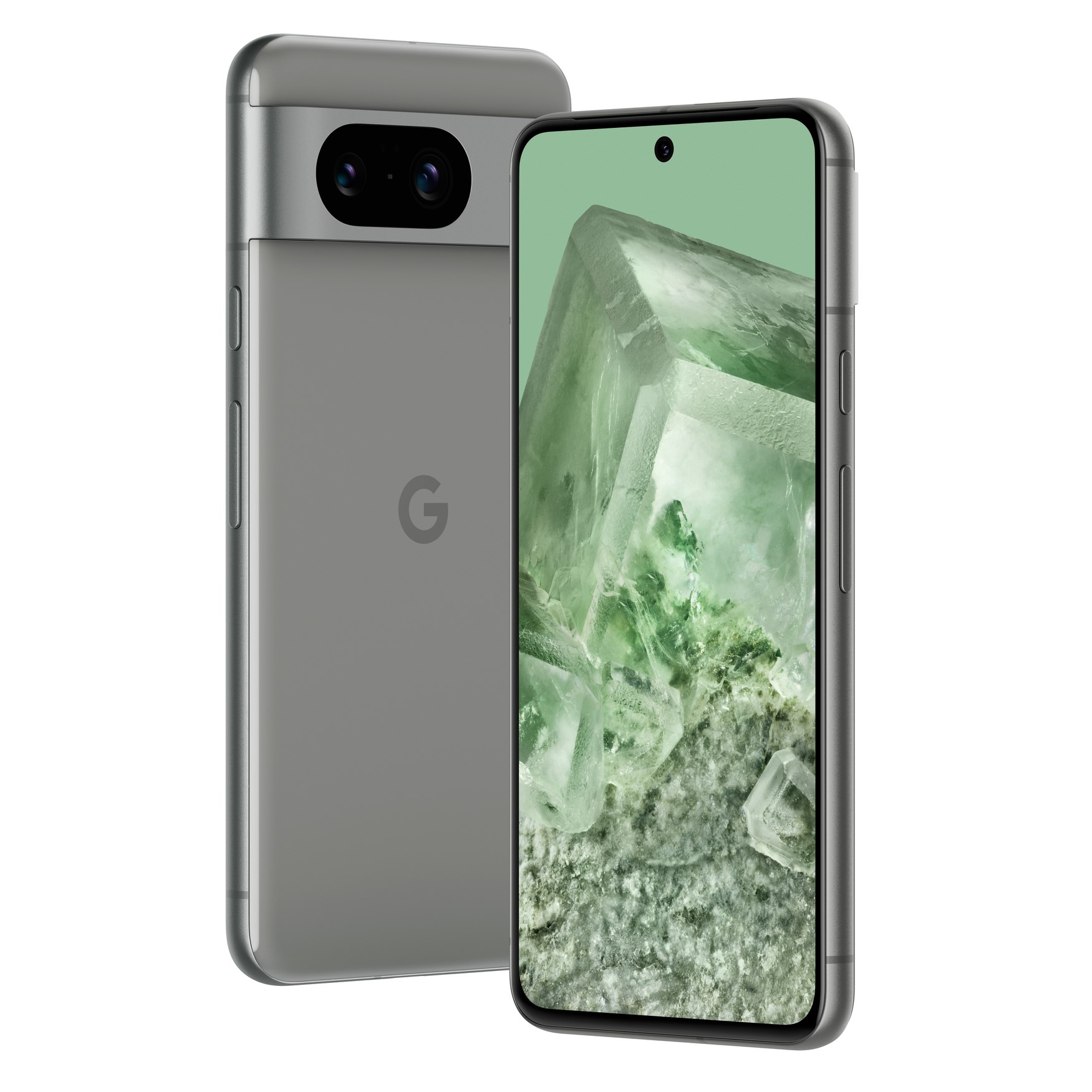
Niche upgrades
The Pixel 8 has better cameras than the Pixel 8a for photography buffs who can't afford the Pixel 8 Pro. If you want to use a Pixel for its seven-year software lifespan, the Pixel 8's stronger Victus display protection could make it more likely to withstand the wear and tear of life. It'll also charge faster, especially wirelessly.
Pros
- Better, brighter AF cameras with Macro Focus
- Smaller display bezels
- IP68/ GG Victus protection
- Wi-Fi 7 support
- Faster charging
Cons
- More expensive
- No major upgrades to performance, display
- Missing some 8 Pro camera tricks
Comparing the Pixel 8a vs. Pixel 8 requires diving deep into Google's tech specs for both phones. Intentionally designed to be quite similar to the Pixel 8, the Google Pixel 8a shares common traits like its Tensor G3 chip, 120Hz FHD display, and seven years of OS updates. Both phones even look very similar on the surface.
Launching at $499, the Pixel 8a is similar enough to the Pixel 8 ($699) that you're probably wondering where the price difference comes in. Many of the differences are minor, but you might decide that you can't live without specific Pixel 8 upgrades like its auto-focusing ultrawide camera or faster charging.
Both phones have come down in price since they launched, but which one is the better value for you?
Google Pixel 8a vs. Pixel 8: Design
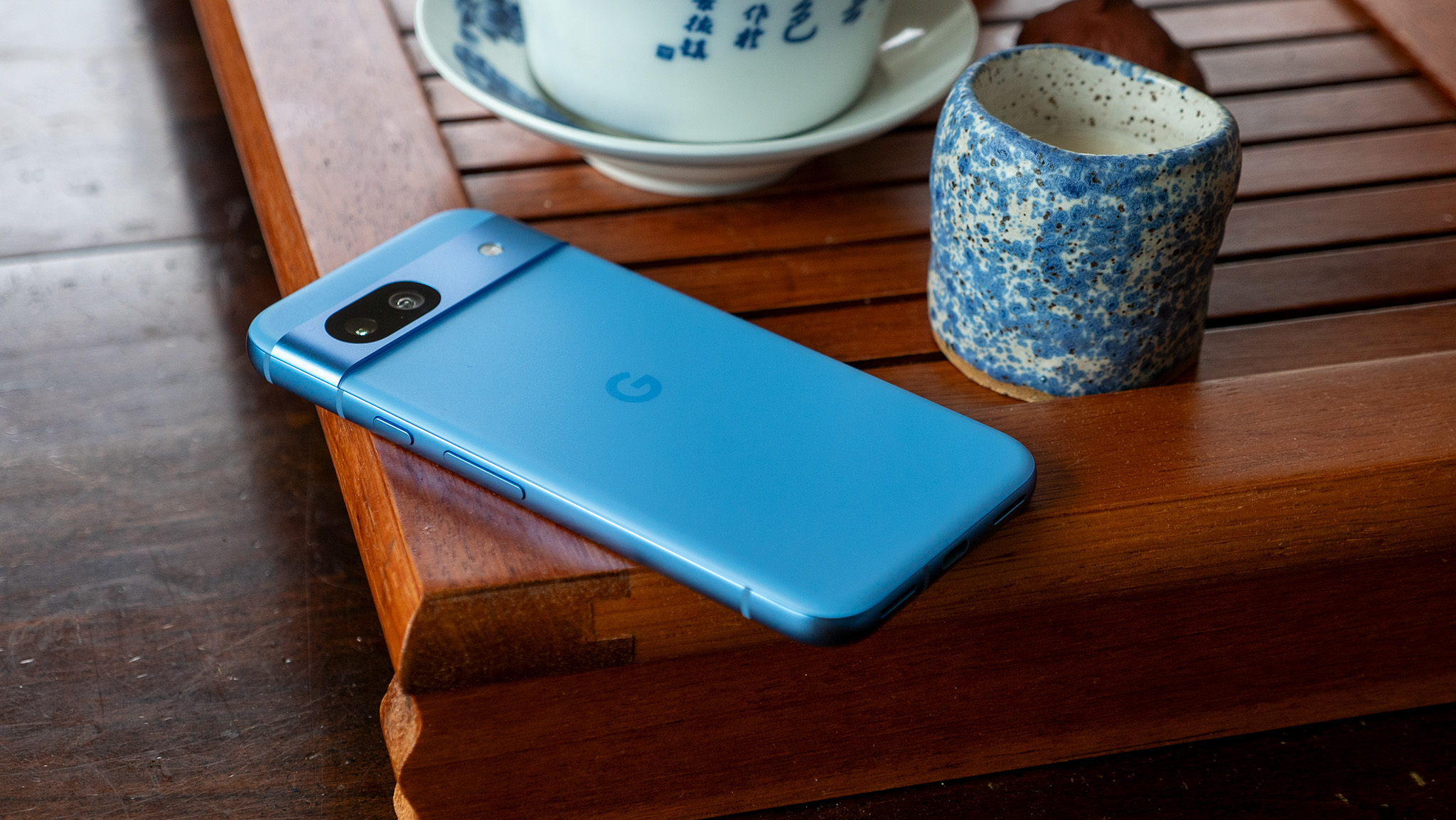
- The Pixel 8a and Pixel 8 share a similar design, with subtle differences between the two.
- The Pixel 8a has a plastic back with a matte finish, while the Pixel 8 has a glass back with a glossy finish.
- Both the Pixel 8a and Pixel 8 come in four colors, but only share Obsidian between the two.
- The Pixel 8a is less durable than the Pixel 8, with an IP67 rating versus an IP68.
Despite its slightly smaller display, the 6.1-inch Pixel 8a is one gram heavier and about 1.5mm taller and wider than the 6.2-inch Pixel 8. You'll notice aluminum bezels along the 8a's front, while the Pixel 8 is thinner along the edge. That being said, you won't notice a difference holding them, especially once you add a case.
Both Pixels use recycled aluminum for the camera bar and side frame, but the Pixel 8a has a matte composite back (a.k.a plastic), while the Pixel 8 has a glossy glass back with Gorilla Glass Victus protection. It's a judgment call whether you prefer a matte or gloss look, but most of the AC staff prefer the Pixel 8a's matte look since it's less likely to accentuate fingerprints. Plus, it feels just as premium to hold as the 8.
They share that classic Pixel camera bar aesthetic, with the dual camera sensors aligned to the left cutout and the LED on the right. It gives the Pixel 8a a unique look compared to most budget Android phones.

The Pixel 8 ships in Obsidian, Hazel, Mint, and Rose, while the Pixel 8a has Obsidian, Porcelain, Bay, and Aloe.
Get the latest news from Android Central, your trusted companion in the world of Android
One non-aesthetic design difference to note: the Pixel 8a only hits IP67 protection, slightly below the Pixel 8's IP68 protection. Technically, both phones can be submerged in one meter of water for 30 minutes, but the Pixel 8 is more likely to survive at slightly greater depths or longer durations. Don't go swimming with either phone, though.
While both phones have stereo speakers, the Pixel 8 has one extra microphone (3) than the Pixel 8a (2), which could make your voice clearer for phone calls.
Google Pixel 8a vs. Pixel 8: Display
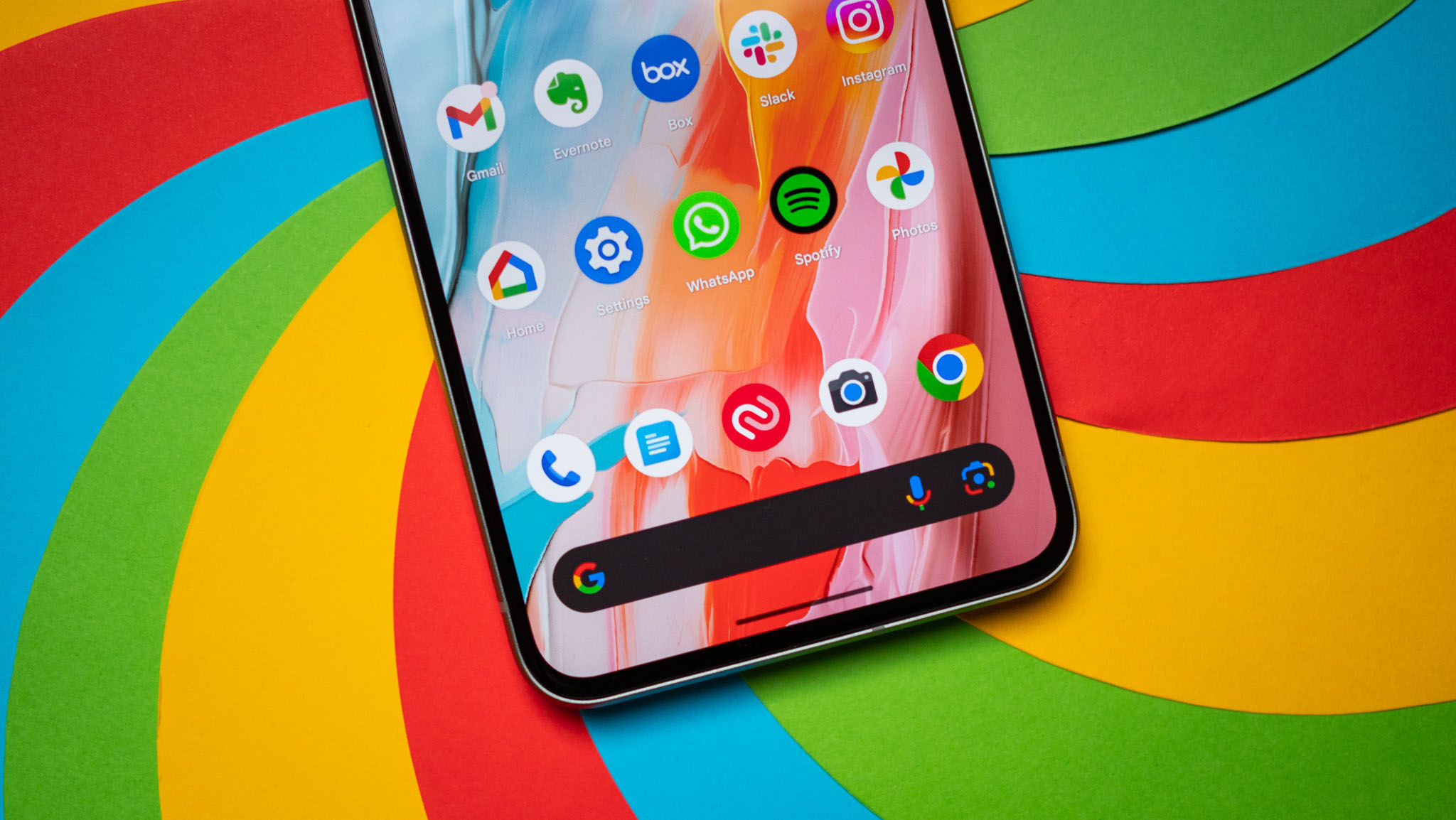
- The Pixel 8a features a 6.1-inch OLED display, whereas the Pixel 8 boasts a 6.2-inch display.
- Both the Pixel 8a and Pixel 8 feature a 120Hz refresh rate and 2,000 nits of peak brightness.
- The Pixel 8a refresh rate only adjusts from 60Hz to 120Hz, while the Pixel 8 LTPO panel ranges from 1Hz to 120Hz.
- Both the Pixel 8a and Pixel 8 only feature a 240Hz PWM dimming rate.
- The Pixel 8a features a 6.1-inch OLED display, whereas the Pixel 8 boasts a 6.2-inch display.
- Both the Pixel 8a and Pixel 8 feature a 120Hz refresh rate and 2,000 nits of peak brightness.
- The Pixel 8a refresh rate only adjusts from 60Hz to 120Hz, while the Pixel 8 LTPO panel ranges from 1Hz to 120Hz.
- Both the Pixel 8a and Pixel 8 only feature a 240Hz PWM dimming rate.
Spec-wise, the 6.2-inch Pixel 8 and 6.1-inch Pixel 8a displays are extremely similar, aside from the slight size difference.
They share 'Actua' AMOLED displays with 2400 x 1080 resolution and 120Hz refresh rates (a step up from the Pixel 7a's 90Hz display). They each hit 1,400 nits for HDR or 2,000 nits for peak brightness. Visually, they have the same 1-million-to-1 contrast ratio and 16 million colors. Technically, the Pixel 8a beats the Pixel 8 by two pixels per inch (430 vs. 428), but you won't notice.
Both phones have a flat-edged design — none of the curving you get with the Pixel 8 Pro or other flagships — and an in-display optical fingerprint sensor.
As mentioned before, the Pixel 8 has slightly smaller bezels than the Pixel 8a, which looks more visually appealing. Plus, the Pixel 8a only has Gorilla Glass 3, which is much less durable against cracks and scratches than the Victus on the mainline Pixel 8.
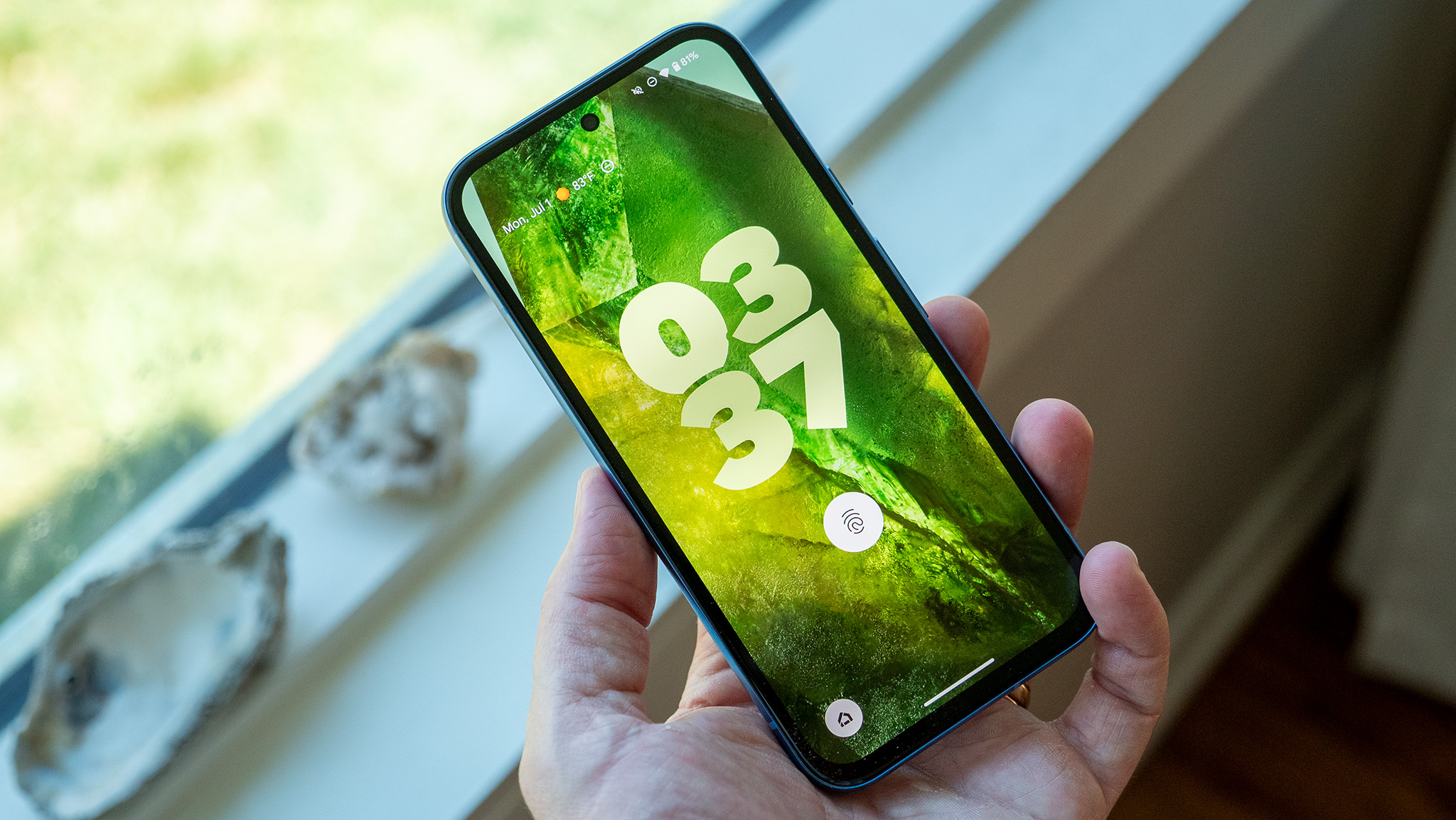
Another difference that you might not notice is the fact that the Pixel 8a does not have an LTPO panel, which means its refresh rate can switch between 60Hz and 120Hz only. The Pixel 8 has LTPO tech, which allows the refresh rate to adjust anywhere from 1Hz to 120Hz, making it more power efficient.
One drawback that both phones have in common is the lowly 240Hz PWM dimming rate, which can cause headaches for PWM-sensitive folks. There's no anti-flicker or flicker-reduction mode either when using the display in low light. This continues to be an issue with even the latest Pixel 9 series.
Google Pixel 8a vs. Pixel 8: Hardware and cameras
- The Pixel 8a and Pixel 8 feature the same Tensor G3 chipset with 8GB of RAM and 128GB or 256GB of storage.
- The Pixel 8a battery has a capacity of 4,492mAh, slightly smaller than the 4,575mAh capacity of the Pixel 8.
- The Pixel 8a battery charges at a top speed of 18W with a USB-C charger, while the Pixel 8 tops out at 27W.
- The Pixel 8a and Pixel 8 feature dual camera systems: a 64MP primary and 13MP ultrawide lens on the Pixel 8a, and a 50MP primary and 12MP ultrawide lens on the Pixel 8.
Category | Google Pixel 8a | Google Pixel 8 |
|---|---|---|
OS | Android 14 (Up to Android 21) Upgradable to Android 16 | Android 14 (Up to Android 21) Upgradable to Android 16 |
Display | 6.1-inch Actua display, 120Hz AMOLED (2400x1080), HDR10+, 2,000 nits, Gorilla Glass 3 | 6.2-inch Actua display, 120Hz LTPO AMOLED (2400x1080), HDR10+, 2,000 nits, Gorilla Glass Victus |
Chipset | Google Tensor G3, Titan M2 security module | Google Tensor G3, Titan M2 security module |
RAM | 8GB LPDDR5X | 8GB LPDDR5X |
Storage | 128GB/256GB UFS 3.1 | 128GB/256GB UFS 3.1 |
Rear camera 1 | 64MP Quad PD wide, ƒ/1.89, 0.8um pixels, OIS, 4K at 60fps | 50MP Octa PD wide, ƒ/1.68, 1.2µm pixels, PDAF, OIS, 4K at 60fps |
Rear camera 2 | 13MP FF, ƒ/2.2, 1.12µm pixels, 120-degree ultrawide | 12MP AF, ƒ/2.2, 1.25µm pixels, 125-degree ultrawide with AF |
Front camera | 13MP ƒ/2.2, 1.12µm pixels, 96.5-degree | 10.5MP ƒ/2.2, 1.22µm pixels, 95-degree |
Camera features | Ultra HDR, Magic Editor, Best Take, Magic Eraser, Photo Unblur, Real Tone, Face Unblur, Panorama, Manual white balancing, Locked Folder, Night Sight, Top Shot, Portrait Mode, Portrait Light, Motion Autofocus, Frequent Faces, Dual exposure controls, Live HDR+ | Ultra HDR, Magic Editor, Best Take, Macro Focus, Magic Eraser, Photo Unblur, Motion Mode, Real Tone, Face Unblur, Panorama, Manual white balancing, Locked Folder, Night Sight, Astrophotography, Top Shot, Portrait Mode, Portrait Light, Super Res Zoom, Motion Autofocus, Frequent Faces, Dual exposure controls, Live HDR+ |
Connectivity | Wi-Fi 6E, Sub-6 5G (mmWave in US), Bluetooth 5.3, NFC, USB-C 3.2 | Wi-Fi 7, Sub-6 5G (mmWave in US), Bluetooth 5.3, NFC, USB-C 3.2 |
Ingress Protection | IP67 dust and water resistance | IP68 dust and water resistance |
Security | In-screen fingerprint module | In-screen fingerprint module |
Audio | Stereo sound, 2 mics | Stereo sound, 3 mics, spatial audio |
Battery | 4,492mAh 18W wired charging, 5W Qi wireless charging | 4,575mAh 27W wired charging, 20W wireless charging, 5W reverse wireless charging |
Dimensions | 152.1 x 72.7 x 8.9mm, 188g | 150.5 x 70.8 x 8.9mm, 187g |
Colors | Obsidian, Porcelain, Bay, Aloe | Obsidian, Hazel, Mint, Rose |
Google gave the Pixel 8a the same Tensor G3 chip, 8GB of RAM, and UFS 3.1 storage as the Pixel 8, making their performance identical. In our review, we found that the 8a's overall performance was definitely better than the 7a and even the Pixel 8 Pro in some cases. Google attributes this to a new thermal management system in the 8a, which delays the inevitable throttling as the phone takes longer to hit its thermal limit.
Google's spec sheets list both phones as lasting 24 hours in normal conditions or 72 hours in Extreme Battery Saver mode. Specifically, the Pixel 8 has a typical 4,575mAh capacity or 4,485mAh minimum; the Pixel 8a hits 4,492mAh (typical) or 4,404mAh (minimum). In our parent company's lab test results, the Pixel 8a actually managed an hour extra than the 8 Pro in the controlled battery rundown test, with the display set to 60Hz. With regular use though, the Pixel 8 does have slightly better battery life thanks to the larger capacity and more power-efficient display.
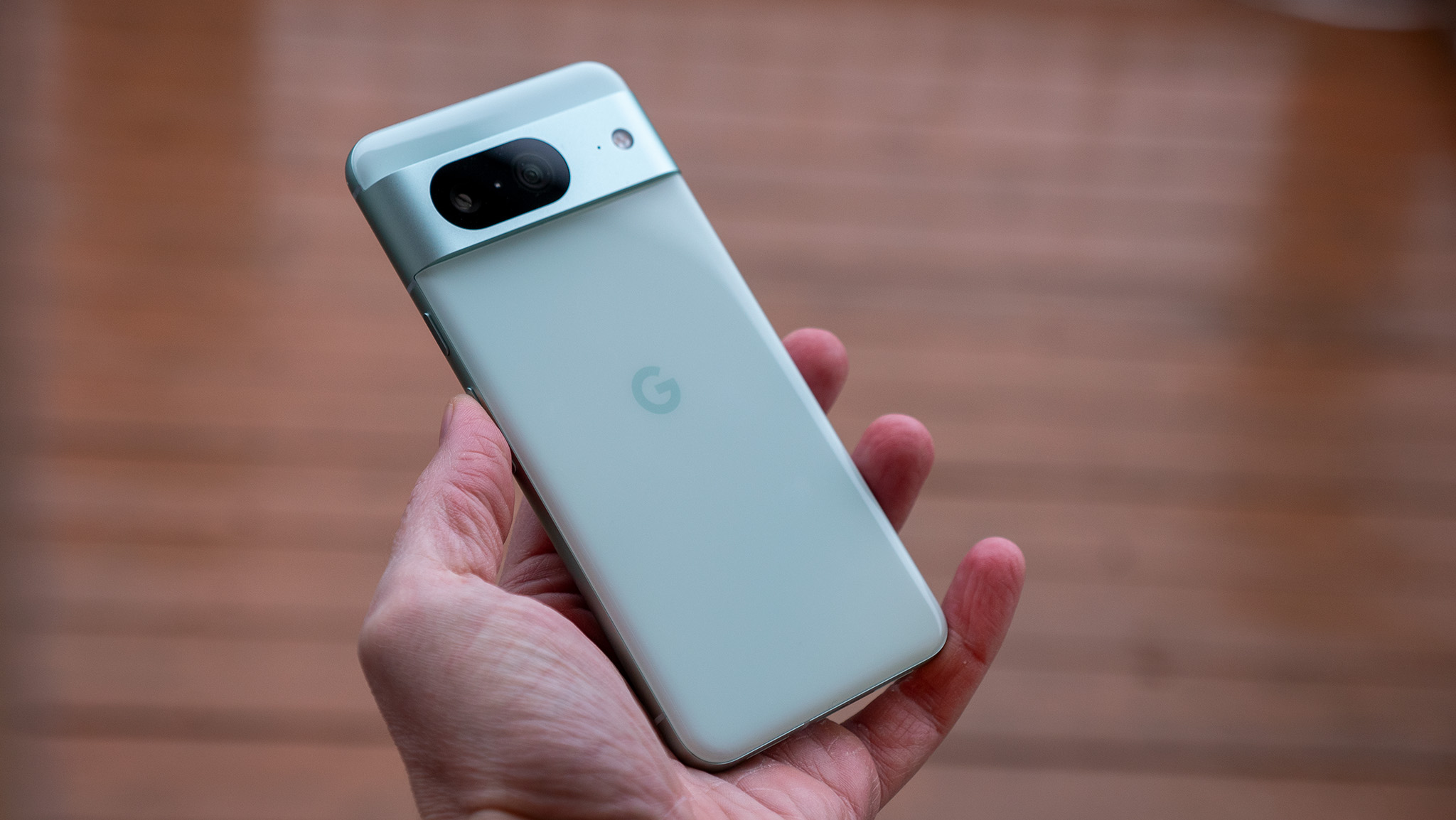
Google lists both phones as having "Fast Charging," but only the Pixel 8 has a guaranteed 50% charge in 30 minutes with 27W speeds. The Pixel 8a is only rated to hit 18W charging. In our 30-minute charging test with a 30W adapter, the Pixel 8a went from empty to just 33%, while the Pixel 8 managed to reach 60%.
As for wireless charging, the Pixel 8a uses 7.5W Qi wireless charging, which is a slight step up from the 7a but no where close to 12W offered by the Pixel 8. If you have a Pixel Stand (2nd Gen) wireless charger, the Pixel 8 is capable of 18W wireless charging.
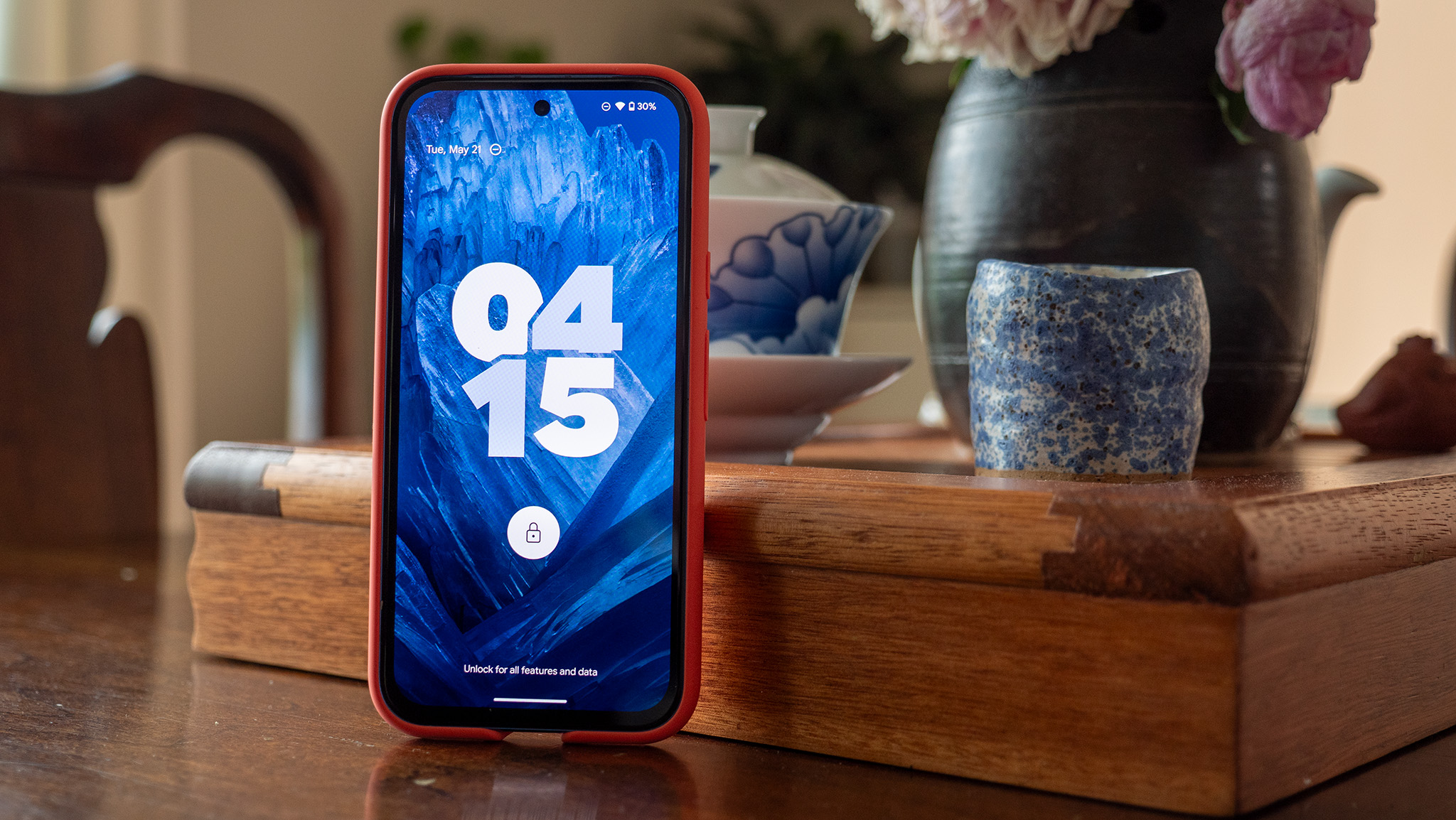
Most of the key Pixel 8a vs. Pixel 8 differences pertain to camera specs and features.
While the Pixel 8a main camera has 64 megapixels to the Pixel 8's 50, the latter has an "Octa PD" system that enables autofocus shots, while the Pixel 8a has a "Quad PD" system. In practice, we found the Pixel 8a's camera to be excellent, with photos exhibiting high contrast and very good color accuracy. It doesn't do as good a job with moving subjects as the 8 though. Both main sensors have 8X Super Res Zoom and optical image stabilization.
Only the Pixel 8's ultrawide camera has autofocus, and it gives you about six extra degrees of width on its shots. Both have the same aperture, but the Pixel 8a has a smaller pixel size.
For the front camera, both phones use a fixed-focus lens. Once again, the Pixel 8a selfie has a higher resolution (13MP) and the same aperture, while the Pixel 8 has a 10.5MP dual PD camera with a larger pixel size. Of the two, only the Pixel 8 can film 4K 60FPS selfie videos, while the Pixel 8a maxes at 30FPS.
Thanks to its Tensor G3 chip, the Pixel 8a packs just as much AI punch as its more expensive sibling's epic Google AI tricks, including Magic Editor, Best Take, and Audio Magic Eraser. However, Google reserves a couple of tricks for the Pixel 8, like Macro Focus, Macro Focus Video, and Cinematic Blur.
Google Pixel 8a vs. Pixel 8: Software and connectivity

- The Pixel 8a and Pixel 8 launched with Android 14.
- The Pixel 8a and Pixel 8 support up to seven years of OS upgrades and software updates.
- The Pixel 8a only supports Wi-Fi 6E, while the Pixel 8 supports Wi-Fi 7.
Whether you buy the Pixel 8 or Pixel 8a, you'll get seven years of software updates and security updates. Both launched with Android 14, which means they'll receive Android 21 in seven years.
It's fair to ask whether the Tensor G3 will hold up for that long, and you can rest assured that neither phone will get whatever new camera tricks come to the Pixel 9. Nevertheless, this longevity is appreciated since it could increase both phones' eventual trade-in value.
Google has also brought Gemini to the Pixel 8a, in addition to popular AI tricks on the mainline Pixels like Circle to Search and Pixel Call Assist. The June Pixel Feature Drop update has brought Gemini Nano AI to the 8a, as promised.
Both phones support most 5G bands, including mmWave, in the United States. If you have a Wi-Fi 7 router, the Pixel 8 is better equipped to take advantage of the extra speed; the Pixel 8a will get the benefits of Wi-Fi 6E routers, at least. Also, the Pixel 8 has dual-band GPS support for better accuracy while using Google Maps, while the Pixel 8a might be more prone to signal blockage.
Google Pixel 8a vs. Pixel 8: Which should you buy?
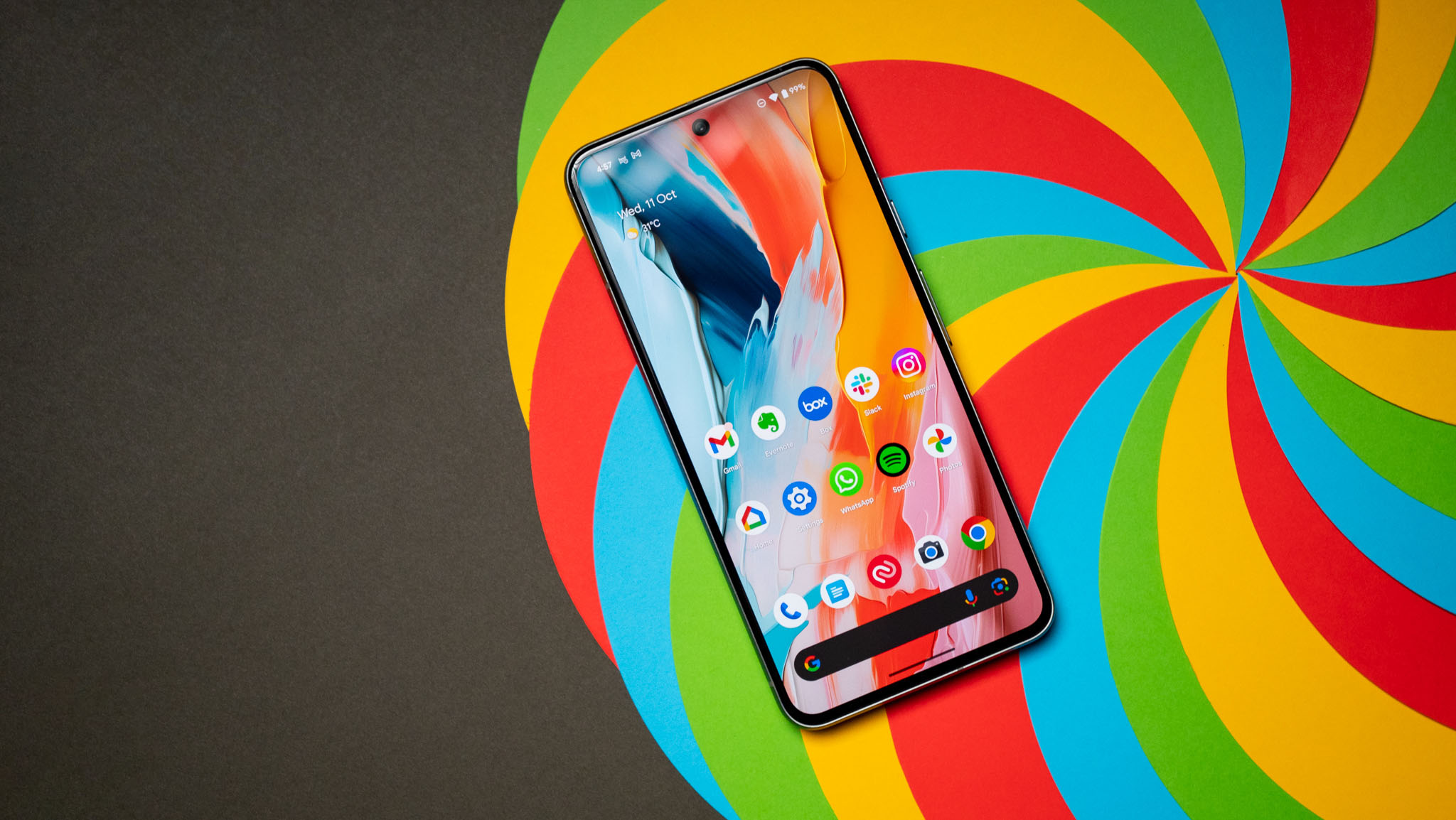
- The Pixel 8a is a stellar choice for anyone looking for an affordable yet powerful Android phone.
- The Pixel 8 is for anyone who wants to take fuller advantage of Google's AI features and connectivity options.
- Anyone considering the Pixel 8a might also want to consider the Pixel 7a, as there are few differences between the two.
The Google Pixel 8a is our current top choice if you want the best cheap Android phone, and is the one we'd recommend over the Pixel 8 to most people. With a price difference of nearly $200, the 8a offers 90-95% of the features of the 8, making it incredible value for money. Plus, in goes toe-to-toe with the Pixel 8 in areas that matter like long-term software support, display quality, processing power, and camera performance.
The Pixel 8 still has the 8a beat in a couple of areas. Maybe you like to go caseless and need extra protection, have a Wi-Fi 7 router, like macro photography, or are really passionate about wireless charging. During sales, the Pixel 8's pricing can go as low as the 8a, in which case, I'd recommend the Pixel 8 blindly.
To put it simply, if you're buying the Pixel 8a just for the cameras and nothing else, we'd suggest getting the Pixel 7a as the performance is nearly identical and you'll also save a lot more. For most users, the Pixel 8a should do just fine and there's no real need to pony up the premium for the 8 (unless they are price-matched during sales).

Barely a compromise
Choose the Pixel 8a for a reasonable price, respectable performance, fun camera AI trickery, and more security updates than any other mid-range phone is likely to get. Skip it if you can't do without the best possible camera sensors offered by the mainline Pixel 8s.

Niche upgrades
Choose the Pixel 8 for the best protection, connectivity and charging speeds, and a slightly larger display. Skip it if you want something more affordable, or you'd prefer the Pro for the best possible speed and photography.

Michael is Android Central's resident expert on wearables and fitness. Before joining Android Central, he freelanced for years at Techradar, Wareable, Windows Central, and Digital Trends. Channeling his love of running, he established himself as an expert on fitness watches, testing and reviewing models from Garmin, Fitbit, Samsung, Apple, COROS, Polar, Amazfit, Suunto, and more.
- Derrek LeeManaging Editor
You must confirm your public display name before commenting
Please logout and then login again, you will then be prompted to enter your display name.
